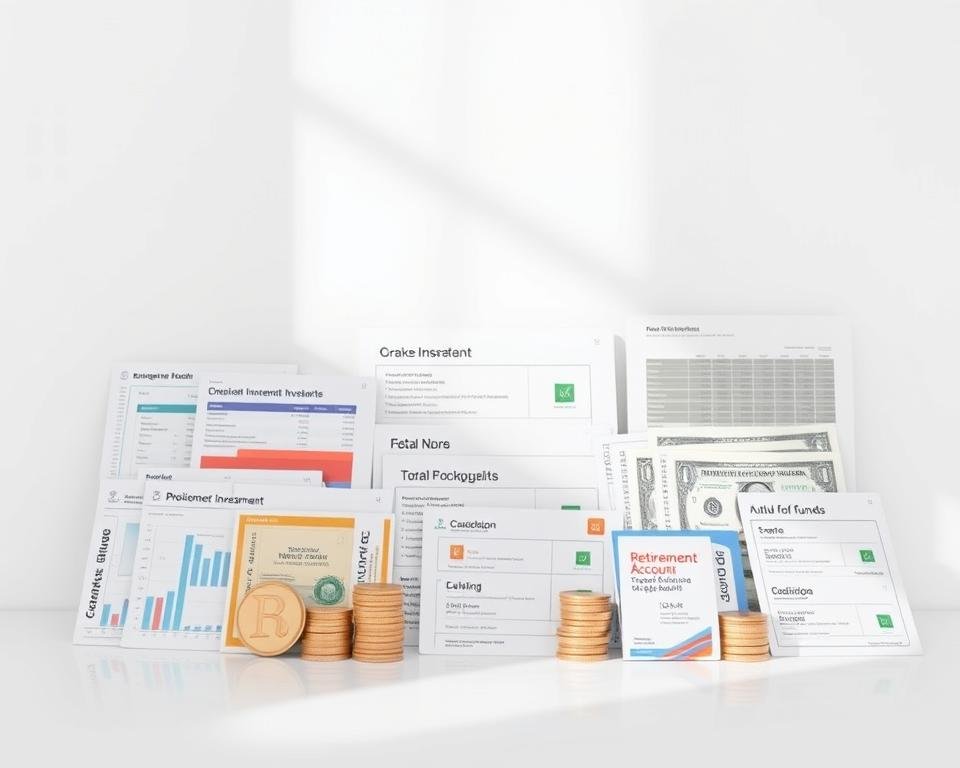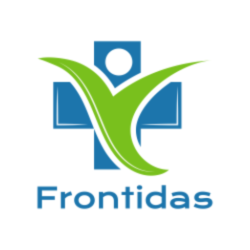Warren Buffett once said, “Someone’s sitting in the shade today because someone planted a tree a long time ago.” This simple truth captures the essence of preparing for your golden years and start thinking about retirement planning. Whether you’re 30 or 55, building financial security requires planting seeds now—even if retirement feels distant.
Studies show most Americans worry they’re behind on savings. Nearly half of households have no retirement savings at all, while those nearing retirement age average just $586,000. But here’s the good news: small, consistent actions today can grow into life-changing results. Fidelity recommends saving 15% of your income annually, including employer contributions, to hit age-based milestones like 3x your salary by 40. Setting up automatic contributions to retirement accounts can help ensure consistent saving and make it easier to stay on track.
Your current age and income don’t define your possibilities—they shape your strategy. For example, financial planning experts emphasize starting early to take advantage of compound interest, the mechanism that drives investment growth over time. Compound interest can significantly boost your savings when you invest early and allow your money to grow and compound for many years. Yet even late starters can build momentum by adjusting spending habits or exploring side income streams.
This isn’t just about numbers—it’s about designing the life you want. Will you travel? Volunteer? Start a passion project? Every choice impacts how much you’ll need. That’s why creating a personalized roadmap matters more than chasing generic savings targets.
Key Takeaways
- Start early: Aim to save 15% of your income yearly, including employer matches
- Age-based goals help track progress (3x salary by 40, 6x by 50)
- Mindset shifts are crucial—prioritize needs over wants
- Healthcare costs alone may require $315,000+ for couples
- Regular check-ins keep your strategy aligned with life changes
Introduction to Retirement
Retirement planning is one of the most important steps you can take to secure your financial future and achieve your retirement goals. A solid retirement plan goes beyond just saving money—it’s about creating a roadmap that supports the lifestyle you envision, whether that means traveling the world, spending more time with family, or finally pursuing your favorite hobbies.
To get started, it’s essential to understand the different types of retirement accounts available. Options like 401(k)s, IRAs, and Roth IRAs each offer unique tax advantages that can help your savings grow faster. For example, many employer-sponsored plans offer matching contributions, which is essentially free money added to your retirement account. If you’re 50 or older, catch-up contributions allow you to save even more each year, helping you close any gaps in your retirement savings. The maximum contribution limit for a 401(k) in 2024 is $23,000, with an additional catch-up contribution of $7,500 for those aged 50 and over. Similarly, the contribution limit for a traditional IRA is $7,000 in 2024, with an additional $1,000 allowed for those aged 50 and over.
Planning for retirement is a key part of personal finance, and the earlier you start, the more time your contributions have to grow. By taking advantage of tax benefits and making regular contributions to your retirement accounts, you’re setting yourself up for a secure financial future—one where you can enjoy your free time and focus on what matters most to you and your family.
Assessing Your Retirement Vision
Picture your ideal Tuesday morning in retirement. Are you sipping coffee while gardening, or packing for a month-long European adventure? This mental snapshot shapes your financial roadmap more than you might think. Setting clear financial goals is essential to creating a roadmap that aligns with your retirement vision.
Defining Your Lifestyle Goals
Retirement isn’t one-size-fits-all. Essential expenses like the cost of housing and healthcare form your baseline, while lifestyle choices determine the extras. A 2023 study found retirees who clearly defined their goals saved 23% more than those with vague plans.
Consider these three common paths:
- Simplified living (focus on family and hobbies)
- Maintaining current comforts
- Adventure-filled years with travel
Setting Realistic Retirement Milestones
Your vision directly impacts savings targets. Want to volunteer locally? You might need 8x your annual income. Dream of safari trips? Aim for 12x. Social Security can cover about 40% of basic needs, but shouldn’t be your safety net. Understanding your current income is crucial, as it helps you estimate how much you’ll need to replace in retirement and set realistic savings goals.
Try this exercise:
- List non-negotiable monthly costs
- Add desired experiences with estimated prices
- Multiply total by 25 for your target nest egg
Review these numbers yearly. Life changes—and so should your plan. A teacher who downsized her home at 60 redirected $800/month into her travel fund. Small tweaks create big possibilities.
Evaluating Your Current Financial Situation
Before charting your retirement course, you need to know your starting point. Nearly 80% of Americans underestimate their monthly spending by 15%, according to a recent JPMorgan study. This gap between perception and reality makes tracking every dollar essential. Paying attention to where your money goes and paying off debts, such as student loans or credit cards, is a crucial part of evaluating your financial situation.

Tracking Your Income, Expenses, And Savings
Start with a 90-day money audit. Use apps like Mint or spreadsheets to categorize:
- Fixed costs (mortgage, insurance)
- Variable expenses (groceries, entertainment)
- Unexpected leaks (subscriptions, impulse buys)
Dave Ramsey’s 7 Baby Steps framework suggests building a $1,000 emergency fund first. Why? Medical bills or car repairs won’t derail your retirement savings. Millionaires in a national study paid off homes in 10.2 years using similar principles. By reducing expenses or increasing your income, you free up more money to invest in your retirement savings, accelerating your progress toward financial security.
Identifying Opportunities To Reduce Debt
The debt snowball method works because quick wins build momentum. List debts smallest to largest, attacking one while making minimum payments on others. One teacher cleared $22,000 in credit card debt this way within three years.
Calculate your net worth:
- Add all assets (savings accounts, home equity)
- Subtract liabilities (loans, credit balances)
- Multiply the result by 25 for your target nest egg
Your retirement account choices matter. A blended approach using Roth IRAs for tax-free growth and 401(k)s for employer matches often yields the best results. Remember: Every $500 monthly reduction in spending equals $150,000 less needed in savings.
Creating A Stress-Free Retirement Budget
What does your ideal retirement budget look like? Financial advisor Suze Orman notes, “A budget isn’t about restriction—it’s about making your money behave according to your priorities.” Start by applying the 80% rule: most experts suggest aiming for 80% of your pre-retirement income to maintain your lifestyle. This amount typically comes from three streams:

Tools like Personal Capital, along with other resources such as online calculators, budgeting guides, and financial planning tools, can help you compare options visually and assist in creating a comprehensive retirement budget.
Estimating Monthly Expenses And Future Needs
Begin with today’s essential living expenses. Groceries, utilities, and transportation costs often rise 3% yearly due to inflation. A $600 monthly grocery bill today could balloon to $1,200 in 25 years. Use online calculators or spreadsheets to project these increases.
Healthcare deserves special attention. Fidelity estimates couples may need $315,000 just for medical costs. Factor in:
- Medicare premiums and copays
- Health insurance premiums and the transition from employer coverage to Medicare or the Health Insurance Marketplace
- Dental/vision care (not fully covered)
- Potential long-term care needs
The 4-5% withdrawal rate helps determine your savings target. If you need $40,000 annually from investments, aim for a $1 million nest egg. Try this approach:
- Calculate current monthly spending
- Add 2% yearly inflation until retirement
- Multiply by 12 months and 25 years
Create multiple scenarios. Could working part-time for two extra years boost your savings by 15%? Would downsizing your home free up $500/month? Tools like Personal Capital help compare options visually. Remember: Your budget should bend to your life—not break it.
Steps To Invest In Retirement Savings
Did you know 67% of workers under 40 don’t max out their employer’s 401(k) match? That’s like leaving free money on the table. Smart investing starts with choosing the right accounts—and using them strategically. Selecting appropriate retirement investments is crucial for building a diversified and resilient portfolio that can support your financial goals in retirement.

Understanding Tax-Advantaged Accounts
401(k)s let you save pre-tax dollars, lowering your current taxable income. With a Roth IRA, you pay taxes now but enjoy tax-free growth. A blended approach often works best: Traditional IRAs allow individuals to save for retirement with tax-deductible contributions, but taxes are due upon withdrawal. This makes them a valuable tool for reducing taxable income now while planning for future needs. The contribution limit for a Roth IRA is the same as a traditional IRA, $7,000 in 2024, and $8,000 for those aged 50 and over.
- Max out employer-matched 401(k) contributions first
- Add Roth IRA funds if you expect higher taxes later
- Use traditional IRAs for deductible contributions—a traditional IRA is a tax-deferred retirement account funded with pre-tax dollars, making it suitable for individuals who qualify based on income limits and want to reduce their taxable income now.
Employer Sponsored Plans: 401(k)s, 403(b)s, and More
Employer sponsored plans like 401(k)s and 403(b)s are powerful tools for building your retirement savings. These plans allow you to contribute a portion of your income directly from your paycheck, often before taxes are taken out. This means your taxable income is reduced, which can lower the amount you owe in ordinary income tax each year. SIMPLE IRAs, another option for small business employees, allow contributions up to $16,000 in 2024, with a catch-up contribution of $3,500 for those aged 50 and over.
One of the biggest advantages of these plans is the employer match. Many companies will match a percentage of your contributions, instantly boosting your retirement account balance. For example, if your employer matches 50% of your contributions up to 6% of your salary, contributing enough to get the full match can add thousands of dollars to your retirement savings over time.
It’s important to understand the rules that come with employer sponsored plans. Each plan has annual contribution limits, vesting schedules that determine when employer contributions become yours, and specific withdrawal rules that can affect your taxes and potential penalties. By learning how these plans work and maximizing your contributions, you can take full advantage of the benefits and grow your retirement savings more efficiently.
Boosting Your Savings Power
Start with 15% of your income—including employer matches. A 25-year-old investing $500/month could grow $1.2 million by 65 (assuming 7% returns). Three key moves:
- Automate contributions with each paycheck
- Increase savings by 1% yearly until reaching 20%
- Choose low-fee index funds (expense ratios under 0.10%)
Exchange traded funds (ETFs) and mutual funds are also excellent options for diversification and long-term retirement investing, as they provide broad market exposure and professional management.
Remember: Withdrawals before age 59½ trigger 10% penalties. Keep stocks above 50% of your portfolio until your 40s for growth. As Vanguard founder John Bogle noted, “Time is your friend; impulse is your enemy.” Regular adjustments keep your strategy aligned with changing goals.
Plans To Retire: Adjusting Retirement Age And Lifestyle
Choosing when to stop working isn’t just about dates—it’s a financial lever that can reshape your future. Every extra year you work reduces savings pressure through compound growth and higher Social Security benefits. As you approach retirement and approach retirement age, it’s important to adjust your strategy by shifting to more conservative investments and reviewing your financial plan to ensure it aligns with your changing needs. For example, retiring at 70 requires 33% less savings than leaving at 65.
Aligning Savings With Your Timeline
Delaying retirement age by 3-5 years can boost nest eggs dramatically. Why? Your money grows untouched while you add more contributions. A $500k portfolio at 60 could become $800k by 65 with 7% annual returns. Meanwhile, Social Security payouts jump 8% yearly if you wait until 70.
Consider these multipliers:
- Age 70: 8x final income needed
- Age 67: 10x required savings
- Age 65: 12x preretirement earnings
A good rule to follow for managing withdrawals in retirement is the 4% rule, which helps ensure your savings last throughout your retirement years.
Smart Lifestyle Tweaks For Stability
Health changes or market shifts might alter your path. Build flexibility with these moves:
- Downsize housing before retiring to cut costs
- Keep part-time work for social engagement and income
- Shift investments to dividend stocks for steady cash flow
Remember: Working longer doesn’t mean grinding forever. Many transition to consulting or passion projects that cover 30-50% of expenses. This balance lets savings grow while funding memorable experiences. Developing strategies to adapt to changing circumstances is essential for maintaining financial stability in retirement.
Building A Bridge Account And Exploring Alternative Investments
Early retirement dreams often hit a roadblock: penalty-free access to savings before age 59½. That’s where bridge accounts shine. Bridge accounts are used alongside traditional retirement plans, such as 401(k)s and IRAs, to provide flexibility and access to funds before the standard retirement age. These taxable brokerage tools let you withdraw funds anytime while your traditional retirement accounts keep growing. Pair them with alternative investments like real estate, and you create multiple income streams for lasting security.
Smart Money Moves Before 59½
Bridge accounts work like financial airbags. You fund them with after-tax dollars, choosing low-turnover index funds (like S&P 500 ETFs) to minimize capital gains taxes. A $100k bridge account could cover five years of $20k withdrawals while your IRA compounds untouched. Additionally, planning for tax free withdrawals from accounts like Roth IRAs can further reduce your tax burden during early retirement.
Three rules for success:
- Calculate bridge needs: (Years until 59½) x (Annual expenses)
- Keep 20% in cash equivalents for market dips
- Rebalance annually to maintain 60/40 stocks/bonds ratio
Real Estate That Pays Dividends
Rental properties can become retirement ATMs—if handled wisely. Always pay cash for investment homes to avoid mortgage stress. A $250k duplex generating $2,500/month covers most couples’ healthcare costs.
Before diving in:
- Pay off your primary residence
- Build six months’ vacancy reserves
- Partner with local property managers
- Consider involving family members in managing properties or making investment decisions to ensure coordinated planning and shared responsibilities
Remember: Alternative investments shouldn’t replace traditional accounts. They’re the spice—not the main course—in your financial recipe. Blend them thoughtfully for stability across market cycles.
Understanding Retirement Benefits
Retirement benefits are a cornerstone of a comfortable retirement, providing steady income when you’re no longer working full-time. Social Security benefits, pensions, and distributions from retirement accounts all play a role in your overall retirement plan. Many retirees will depend on a mix of savings, Social Security, and other income sources to cover living expenses. Understanding how these benefits work—and how to maximize them—can make a significant difference in your financial security. Social Security benefits are an important component of retirement income, but they may not cover all living expenses during retirement, making it essential to plan for additional income sources.
For example, Social Security benefits are based on your work history and the age at which you start claiming them. Waiting until your full retirement age, or even delaying benefits until age 70, can increase your monthly benefit amount and provide more income over your lifetime. You can start receiving Social Security retirement benefits as early as age 62, but doing so will reduce your monthly payments. Pensions and retirement account distributions also require careful planning. Taking money from your retirement accounts before reaching the appropriate retirement age can trigger taxes and penalties, so it’s important to manage withdrawals strategically.
Estimating your benefit amounts, planning when to start payments, and understanding the tax implications of each income source are all essential steps. By managing your retirement benefits wisely, you can ensure a steady stream of income and enjoy a comfortable retirement. Understanding post-retirement expenses helps to determine the income needed for maintaining the same lifestyle, ensuring that your financial plan aligns with your goals.
Implementing Essential Lifestyle Changes
What if trimming $90 monthly could fund your future safari trip or grandkid’s college fund? Small shifts in daily habits often create the biggest retirement breakthroughs. Start by auditing your last three bank statements—you’ll likely spot patterns begging for adjustment. Remember, every dollar saved today plants trees for tomorrow’s shade. These lifestyle changes should be incorporated into your broader financial plan to ensure long-term success.
Cutting Unnecessary Expenses
Ditch subscriptions you haven’t used in 90 days. Swap cable for streaming ($70/month saved) and brew coffee at home ($150/month). A family slashed $1,080 yearly by reducing six categories just $15 each—like limiting takeout Fridays and using library movies.
Finding Additional Income Streams
Turn skills into cash flow. Weekend pet-sitting through Rover nets $300 monthly. A teacher made $1,200/month tutoring online evenings. Invest that extra $1k monthly—at 7% growth, it becomes $240k in 12 years. Side gigs build safety nets while keeping life vibrant.
Pro tip: Automate new income into separate accounts labeled “Future Travel” or “Medical Fund.” Visibility fuels motivation. Remember—every dollar saved today plants trees for tomorrow’s shade.
Staying on Track for Retirement
Staying on track for retirement is an ongoing process that requires regular attention and adjustments to your retirement plan. As you move through different stages of life, it’s important to review your investment accounts, adjust your contributions, and manage risk to keep your retirement savings aligned with your goals.
Consider factors like inflation, rising healthcare costs, and potential long-term care expenses when planning for the future. Regularly monitoring your retirement plan helps you identify gaps or opportunities to save more, rebalance your investment accounts, and make sure your savings plan is still on target. Managing risk by diversifying your investments and adjusting your asset allocation as you age can also help protect your nest egg.
By staying proactive and making adjustments as needed, you can ensure your retirement savings continue to grow and that you’re prepared for any unexpected expenses. This approach helps you achieve your retirement goals and maintain a secure financial future.
Conclusion
In conclusion, creating a comprehensive retirement plan is essential for anyone looking to enjoy a comfortable retirement and a secure financial future. Whether you’re just starting to plan for retirement or are nearing retirement age, understanding your retirement accounts, taking advantage of tax advantages, and regularly reviewing your plan are key steps to success.
Retirement planning isn’t a one-time event—it’s an ongoing process that involves managing your benefits, investments, and expenses to ensure you have enough money to support your desired lifestyle. By prioritizing your retirement goals, making informed decisions, and seeking professional advice when needed, you can take advantage of every opportunity to grow your savings and enjoy the retirement you’ve always envisioned. Start planning today to build the future you deserve.
FAQ
How Much Should I Save Each Month For Retirement?
Aim to save 15–20% of your pre-tax income, including employer contributions. Tools like Fidelity’s retirement calculator can help personalize this based on your age, current savings, and lifestyle goals.
What’s The Best Age To Start Investing In A Roth IRA?
Start as early as possible—even in your 20s. The power of compound growth in accounts like Vanguard’s Roth IRA can turn small, consistent contributions into significant savings over decades.
How Do I Reduce Debt Before Retiring?
Prioritize high-interest debts like credit cards first. Consider refinancing options or using the “debt avalanche” method to save on interest. Apps like Mint can track progress and keep you motivated.
Will Retiring Early Affect My Social Security Benefits?
Yes. Claiming benefits before full retirement age (67 for most) reduces monthly payments by up to 30%. Delaying until 70 increases payouts by 8% annually—a smart move if you’re healthy and have other income sources.
How Do I Estimate Healthcare Costs In Retirement?
Budget around ,000–,000 annually per person. Medicare covers basics, but supplemental plans like AARP’s Medigap help with copays and prescriptions. Factor in long-term care insurance if family history suggests you’ll need it.
Can Real Estate Investments Replace A 401(K)?
Not entirely, but rental properties or REITs (like those from Realty Income) add diversification. They generate passive income and hedge against market volatility, complementing traditional retirement accounts.
What’s A Bridge Account, And Do I Need One?
A bridge account—like a taxable brokerage with Charles Schwab—covers expenses between retiring and accessing 401(k)/Social Security. It’s essential if you plan to retire before 59½ to avoid early withdrawal penalties.
How Do I Adjust My Lifestyle To Save More?
Cut non-essentials like subscriptions or dining out. Use apps like YNAB to track spending. Consider downsizing your home or driving a used car—small changes free up cash to boost your savings rate.
